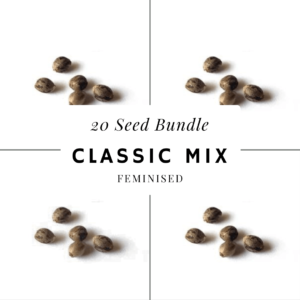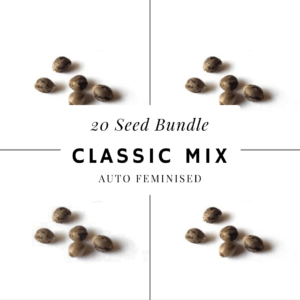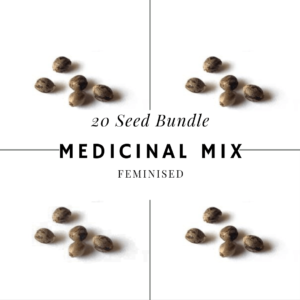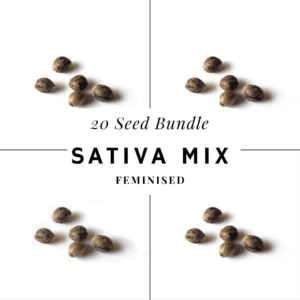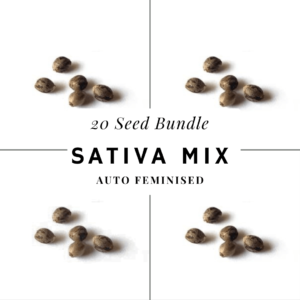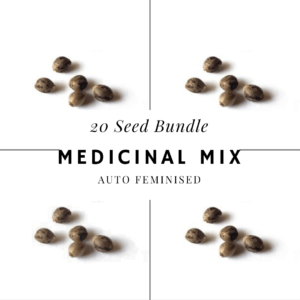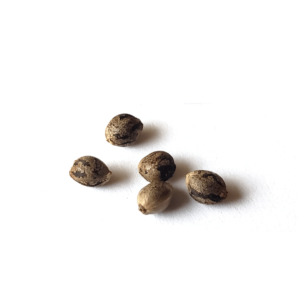To nurture healthy seedlings, it’s essential to understand and apply key gardening practices. If you want to avoid killing seedlings, you have to learn a lot!
This guide covers critical areas such as proper watering, lighting, and soil composition. You’ll find specific strategies to prevent common missteps that can doom young plants. By following the expert tips we’ve compiled, you can expect to nurture robust seedlings ready for a life in full bloom.
(To learn more about storing your seeds, check this out.)
Key Takeaways
Preventing common seedling problems requires maintaining moderate soil moisture, providing sufficient light, adequate aeration, and avoiding overcrowding to curtail issues such as damping off, leggy seedlings, and stunted growth.
Creating the ideal environment for seedlings involves ensuring 14-16 hours of light daily, maintaining temperatures around 20°C, and using a light, sterile seed starting mix for proper drainage and aeration.
Proper watering techniques, pest and disease control, and careful transition of seedlings to outdoor conditions, including gradual acclimation and sunburn prevention, are essential for healthy plant growth.
Understanding Healthy Seedlings Issues

Bringing life to those tiny seeds and watching them grow into healthy seedlings is a gardener’s delight. But along the way, you might face hurdles that can make your heart sink. Damping off, leggy or lanky seedlings, and stunted growth are common foes that can strike when you least expect it. But armed with knowledge, you can tackle these issues head on.
Let’s tackle the most common problems one by one.
1. Damping Off
For gardeners, damping off can be a genuine nightmare. This fungal disease thrives in wet, poorly ventilated conditions, rapidly eliminating your cherished seedlings. Your seedlings look healthy one moment, and the next, they’re wilting, their stems water-soaked and thin, their leaves brown and mushy. It’s a heartbreaking sight, but one that can be avoided.
Damping off is most likely to strike right after your seeds germinate and sprout. Slow-germinating, slow-growing seeds are particularly susceptible, and this vulnerability can last for up to eight weeks. So, what’s the solution? Prevention. By maintaining moderate moisture levels, ensuring good air circulation, practicing good hygiene, and controlling moisture around the seedlings, you can prevent damping off in your seedlings. Remember, a little prevention goes a long way in keeping your seedlings healthy and vibrant!
2. Leggy Seedlings are not healthy seedlings

Leggy seedlings are another common problem that gardeners face. These seedlings have elongated stems and slower growth, all due to insufficient light. Imagine stretching your neck to catch a glimpse of your favorite actor at a crowded premiere – that’s what your seedlings are doing, stretching towards the light!
Preventing leggy seedlings is all about providing adequate light. This can be achieved by using appropriate grow lights and ensuring that your plants have enough exposure to the light source. Healthy seedlings require a minimum of 12 hours of bright light daily, with 14 to 16 hours being ideal.
To maintain the ideal light distance and prevent legginess, adjust the height of the grow lights or their positioning relative to the sun as the seedlings grow. And don’t forget to rotate the pots regularly – this ensures even light distribution to all sides of the seedlings.
3. Stunted Growth
Stunted growth in seedlings can be a puzzling problem. Your seedlings are getting all the light they need, you’re watering them just right, and yet, they’re not growing as they should. The culprit could be nutrient-deficient soil.
To resolve this issue, you can:
Use a balanced seed starting mix
Add diluted liquid fertilizer
Look out for signs of nutrient deficiency, such as leaf discoloration or distortion, yellowing at leaf tips, or undeveloped root systems
Use a well-balanced seed starting mix that consists of a combination of organic and inorganic materials
Add a balanced, organic slow-release fertilizer to the mix
These steps can help ensure that your plants have the nutrients they need to grow healthy and strong by properly planting them.
Remember, what goes into your soil, goes into your plants, and ultimately, into your body!
Creating the Ideal Environment for Healthy Seedlings

Now that we’ve tackled some common seedling issues, let’s shift our focus to creating the ideal environment for your seedlings. After all, prevention is better than cure! Proper light, temperature, and soil conditions are the building blocks of a thriving garden.
Consider your seedlings as sun enthusiasts. They flourish when exposed to 14-16 hours of light each day, particularly from a light source stationed directly above them. But don’t worry, you don’t have to move your garden to the equator! Plug-in shop fluorescent or LED light fixtures can provide the necessary light spectrum and intensity for healthy growth.
Temperature is also a vital factor influencing seedling growth. It affects germination rates and photosynthesis, with most seedlings prospering at an optimal temperature of around 20°C. And let’s not forget the soil. It’s not just dirt but the home for your seeds. A good soil mix supports healthy development and helps prevent common issues such as damping off or leggy growth.
Light Requirements for Healthy Seedlings

You know how you feel refreshed and energized after a day spent out in the sun? Your seedlings feel the same way about light! Adequate light is crucial for promoting strong and healthy growth in seedlings. But how much light is enough light? The recommended light duration for seedlings in a day is 14 to 16 hours.
Light intensity is another critical factor. Too much light can decrease photosynthetic rates and lead to photoinhibition, impacting plant survival and distribution. On the other hand, too little light can hinder growth and productivity by affecting gas exchange. So, it’s all about striking the right balance. Growing Seedlings Outdoors
Growing seedlings outdoors can be a rewarding experience. It allows seedlings to benefit from natural sunlight, rainwater, and the elements, which can foster robust growth. However, it also poses challenges that are different from indoor gardening.
Choosing the Right Location
The first step to growing seedlings outdoors is choosing the right location. Seedlings need a spot that gets plenty of sunlight, at least six hours a day. However, they should also be protected from harsh weather conditions, such as strong winds or heavy rain.
Preparing the Soil
Next, you need to prepare the soil. Outdoor soil should be rich in nutrients, well-drained, and have a neutral pH. You can improve the soil quality by adding compost or other organic matter. Also, consider getting a soil test to determine if any specific nutrients are lacking.
Watering and Feeding
Watering is crucial when growing seedlings outdoors. Unlike indoor plants, outdoor seedlings are exposed to the sun and wind, which can dry out the soil quickly. Therefore, regular watering is necessary. However, avoid overwatering as it can lead to root rot.
Feeding your seedlings with a balanced, slow-release fertilizer can also promote healthy growth. But remember, too much fertilizer can burn the roots and stunt growth, so always follow the package instructions.
Protecting from Pests and Diseases
Outdoor seedlings are more exposed to pests and diseases. Regularly inspect your seedlings for signs of infestation or disease. If you spot any, treat them immediately using organic or chemical pesticides, or fungicides, depending on the issue.
Hardening Off
Before planting your seedlings outdoors, they need to go through a process called “hardening off.” This involves gradually exposing them to outdoor conditions over a week or two, increasing their resilience and improving their survival rate once they’re planted in the garden.
Remember, growing seedlings outdoors requires patience and care. But with the right techniques, you can enjoy a bountiful harvest or a garden full of beautiful flowers.
Temperature Control

Just like Goldilocks, your seedlings like their temperature just right – not too hot, not too cold. Maintaining proper temperature control is crucial for the process of seed germination and subsequent growth of seedlings. The ideal temperature range for seed germination is between 65 and 75°F (18 and 23°C).
But how can you ensure a warm environment for your seeds? One simple method is by placing a heat mat under the tray. Temperature fluctuations can also have a significant impact on seedling growth, affecting germination, shoot growth, and overall plant fitness. So, remember, when it comes to temperature, consistency is key.
Soil and Potting Mix
Your soil is more than just dirt; it’s the foundation of your garden. The recommended type of soil for seedlings is a light, sterile seed starting mix that allows for proper drainage and aeration. A soil mix that’s light and fluffy promotes healthy root development by providing a texture that allows the roots to easily push through. Plus, the sterile nature of the mix helps prevent root die off and seedling failure, ensuring a more successful growth.
The composition of soil also influences the watering needs of seedlings, impacting the amount of water retained. For example, a soil mix in a shallow container holds more water than in a deep container. Indoor potting mix is designed to be light and fluffy, balancing moisture retention with adequate drainage, which is crucial for healthy seedling growth. So, think of your soil as more than just dirt; it’s a life-sustaining ecosystem for your seedlings!
Proper Watering Techniques
Watering your seedlings might appear straightforward, but it involves more than merely pouring water into a pot. Appropriate watering methods encompass soil moisture monitoring and guaranteed good drainage. Overwatering can lead to waterlogged soil, causing root rot, while underwatering can leave your seedlings thirsty and wilting.
But how do you know if you’re watering just right? The key is to check the soil. If the top layer is dry, it’s time to water your seedlings. And remember, the type of soil or potting mix you use can also affect moisture levels. Certain ingredients can help retain moisture while ensuring proper drainage.
Good drainage is just as crucial as proper watering. It prevents water accumulation around the roots, which can lead to root diseases and hinder seedling growth. So, when it comes to watering, it’s all about balance. Not too much, not too little, but just enough water!
Monitoring Soil Moisture
Monitoring soil moisture is like keeping a check on your seedlings’ thirst. Too much water can restrict the supply of oxygen that roots need, resulting in stunted growth, yellowing leaves, and overall damage to the plant’s health. On the other hand, too little water can leave your seedlings parched and wilting.
The trick is to find the right balance. The recommended moisture level for seedling soil varies by plant species but typically ranges from 20% to 60%. Seedlings can usually tolerate slightly drier soil for a few hours, even a day. So, keep a close eye on your soil, and your seedlings will thank you for it!
Drainage Solutions

Proper drainage in seedling pots is like a safety valve for your seedlings. It allows excess water to drain away, preventing waterlogged soil conditions that can lead to root rot. Sounds simple, right? But many a gardener has been stumped by the elusive balance of watering and drainage.
Luckily, there are solutions. Using pots with good drainage, for example, is a great start. And if you find that your seedling pots are holding too much water, don’t despair. There are DIY solutions to enhance drainage, such as increasing aeration with materials like coarse sand, vermiculite, perlite, and adding chunky bark or a more porous material to the potting mix.
Remember, good drainage is the key to happy, healthy seedlings!
Protecting Healthy Seedlings from Pests and Diseases

Seedlings, much like us, are prone to pests and diseases, and they equally require protection. Pests like fungus gnats and diseases like damping off can wreak havoc on your seedlings. But fear not! Armed with knowledge, you can keep these threats at bay.
Spotting the signs of trouble early on is crucial. Look out for signs of pest infestation, like holes, wilting or dropping, and discoloration, and common seedling diseases like fusarium wilt, leaf spots, and powdery mildew. Remember, the earlier you spot the signs, the sooner you can take action.
Whether it’s using sticky traps for pests, maintaining a dry top layer of soil, or sterilizing pots and tools for disease prevention, there are several strategies you can employ to protect your seedlings. So, roll up your sleeves and get ready to stand guard over your garden!
Pest Control
Pests may be small, but they can cause big problems for your seedlings. Take fungus gnats, for example. These tiny insects can damage the roots of your seedlings, hindering their growth and overall health. But don’t let these pests get the best of you!
There are several ways to wage war against these pesky invaders. Here are some effective methods to control pests:
Sticky traps: These traps lure and trap flying insects, preventing them from reaching and harming your seedlings.
Introducing beneficial nematodes: Specifically Steinernema feltiae, which are known for their effectiveness in controlling fungus gnats.
Keeping the top layer of soil dry: This not only hinders the growth and spread of pests but also helps control fungal diseases.
So, gear up and get ready to protect your seedlings from these unwelcome guests!
Disease Prevention
Diseases can be just as damaging as pests, if not more. They can creep up on you, wreaking havoc on your seedlings before you know it. But there are ways to keep these diseases at bay. By sterilizing your seedling pots and tools, maintaining moderate moisture levels, and ensuring good air circulation, you can prevent most seedling diseases.
Common diseases like fusarium wilt, leaf spots, and powdery mildew can spell disaster for your seedlings. But with the right preventive measures, you can ensure that these diseases remain a distant threat rather than a present danger. Remember, a little prevention goes a long way in keeping your seedlings healthy!
Transitioning Seedlings Outdoors

When your seedlings have matured and strengthened, it’s time for their move into the great outdoors. This transition is a significant step and should be handled with care. This process includes hardening off and sunburn prevention, which prepares the seedlings for the outdoor environment, reducing the risk of shock and improving their likelihood of survival.
The process for transitioning seedlings outdoors involves gradually acclimating them to outdoor conditions over a period of about a week. This means slowly increasing their exposure to outdoor elements like wind, sun, and rain, which toughens up the seedlings and prepares them for their new home. But remember, this transition needs to be gradual. Just like us, seedlings need time to adjust to new surroundings!
Sunburn is another risk that seedlings face when they first step outdoors. Just like our skin, seedlings can get damaged from sudden exposure to intense sunlight. To prevent sunburn, gradually acclimate indoor-grown seedlings, or seedlings indoors, to outdoor conditions over a week. This will help them adjust to the new light levels and prevent sunburn.
Gradual Acclimation
Gradual acclimation is like a boot camp for your seedlings. It’s a process that helps them adjust to the harsher conditions of the outdoors. The acclimation process typically lasts around a week, allowing seedlings sufficient time to gradually adjust to the outdoor environment.
To acclimate seedlings to outdoor conditions, follow these steps:
Start by taking them outdoors for a limited time 2-4 times a week, starting about 7-10 days before the final transplant.
Place them in shaded and protected areas, especially on warm days, and bring them in at night.
Gradual acclimation facilitates seedlings’ adaptation to varying levels of sunlight, wind, and environmental conditions.
This fosters the growth of sturdy stems, robust leaves and roots, and effectively readies the seedlings for their outdoor adventure.
Sunburn Prevention

Sunburn in plants can be just as damaging as in humans. Excessive sunlight exposure can cause leaf scorch or discoloration, which can have a detrimental impact on their growth. But fear not, there are steps you can take to prevent this.
To prevent sunburn, follow these steps:
Gradually expose your seedlings to intense sunlight.
Start with dappled sun, with a gradual increase in outdoor exposure each day.
Keep an eye on your seedlings, and if you notice any signs of sunburn, such as white or bleached areas on the leaves, shift them to a shadier spot.
Remember, slow and steady wins the race!
Customizing Care for Different Plants
As with people, different plants have varied needs. Some enjoy bright sunlight, whereas others prosper in the shade. Some need lots of water, while others prefer dry soil. So, it’s important to customize your care for each type of plant, considering their unique water, light, and soil preferences.
Indoor plants, for example, generally require less maintenance tasks like weeding, digging, and mulching compared to outdoor plants. But they still need your care. Whether it’s choosing the right potting mix, providing the right amount of light, or watering just right, indoor plants need your attention to thrive.
When it comes to outdoor plants, the challenges are different but no less demanding. Outdoor plants may need the addition of fertilizer or organic matter to the soil, regular weeding, and protection from pests and diseases. So, whether you’re nurturing indoor plants or tending to your outdoor garden, remember to customize your care to suit the needs of each plant. After all, a happy plant is a thriving plant!
Summary
Embarking on the journey of growing seedlings is like setting sail on a vast ocean. There will be storms (damping off, leggy seedlings, stunted growth), and there will be calm waters (the joy of seeing your seedlings grow strong and healthy). With the right knowledge and tools, you can navigate these waters with confidence.
So, whether you’re a seasoned gardener or a green-thumbed newbie, remember that every seedling has the potential to grow into a mighty plant. With the right care, the right environment, and a little bit of love, you can turn your seedling dreams into a garden reality. So, put on your gardening gloves, grab your watering can, and embark on your seedling journey. The world of seedlings awaits!
Frequently Asked Questions
How do you keep seedlings from dying?
To keep seedlings from dying, maintain a temperature of around 65 degrees F, provide good air flow with a gentle fan, and ensure the planting media is moist but not oversaturated. Good luck!
How do you stop seedlings from being eaten?
To stop seedlings from being eaten, collect pests like snails, slugs, caterpillars, earwigs, and beetles with gloves and place them in a bucket with salty or soapy water to prevent them from damaging your seedlings.
What can kill seedlings?
Damping off, a fungal disease, can kill healthy seedlings by causing them to wither and die. It is important to use sterilized soil and containers to prevent contamination and practice proper watering techniques to avoid this issue.
How can I prevent my seedlings from becoming leggy?
To prevent your seedlings from becoming leggy, make sure to provide them with adequate light by using appropriate grow lights and ensuring they have enough exposure to the light source. This will help promote healthy growth and prevent legginess.
What is the ideal temperature for seed germination?
The ideal temperature for seed germination is between 65 and 75°F (18 and 23°C). This range provides optimal conditions for the seeds to sprout.




